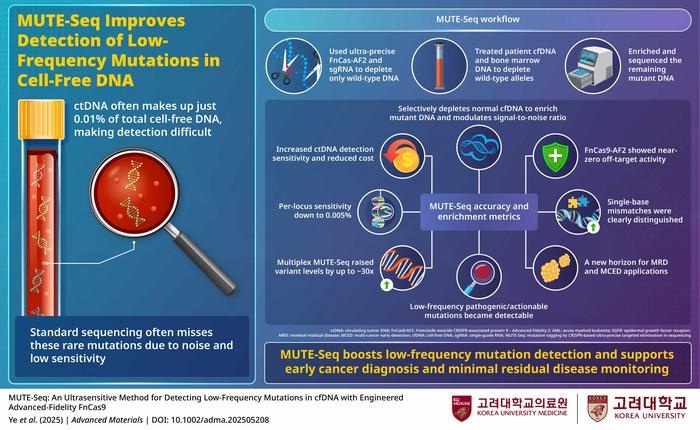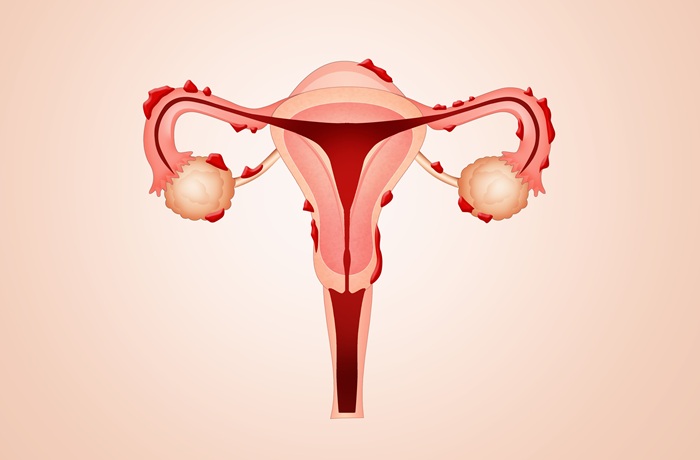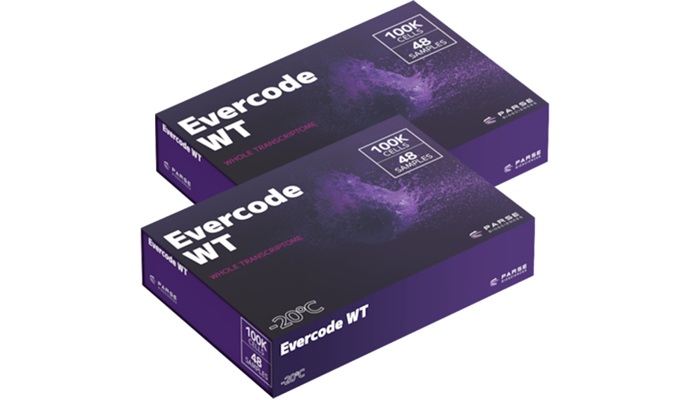Successful Transport of Blood Samples with Small Drones
|
By LabMedica International staff writers Posted on 17 Aug 2015 |

Image: Preparation of clinical blood samples for test-flights by small drone. (1) Left: Custom-cut foam block. (2) Right: Placement of sealed foam lock in the bio-hazard bags as well as absorbent material for potential sample containment (Photos courtesy of Johns Hopkins Medicine and PLOS One).

Image: (3) Left: Placement of first bio-hazard bag inside the second bio-hazard bag. (4) Middle-right: Placement of double-wrapped payload in the fuselage (Photo courtesy of Johns Hopkins Medicine and PLOS One).

Image: (5) Left: Covered, secured, and labeled fuselage. (6) Right: Launch with hand toss (Photo courtesy of Johns Hopkins Medicine and PLOS One).
A proof-of-concept, initial study has shown that small unmanned aerial systems (UAS) could potentially be used to transport clinical blood specimens for diagnostics without damage to the specimens.
In a first rigorous examination published about the impact of drone transport on biological samples, a team of clinical researchers and engineers, led by Timothy Kien Amukele, MD, PhD, pathologist at Johns Hopkins University School of Medicine (Baltimore, MD, USA) and director of a collaboration with Makerere University in Uganda, found that results of common, routine tests on the blood samples were not affected by up to 40 minutes of sample-travel in hobby-sized drones. This could especially aid millions of people in developing nations where most tests are currently done by dedicated laboratories that can be scores of miles from remote clinics in rural and economically impoverished areas that lack, for example, good roads.
“Biological samples can be very sensitive and fragile,” said Dr. Amukele. That sensitivity makes even the pneumatic-tube systems used by many hospitals, for example, unsuitable for transporting blood for certain purposes. Of particular concern related to sample transport in drones is the sudden acceleration that marks the launch of the vehicle and the jostling when the drone lands on its belly. “Such movements could have destroyed blood cells or prompted blood to coagulate and I thought all kinds of blood tests might be affected, but our study shows they weren’t,” he added.
For the study, total of 6 blood samples were collected from each of 56 healthy adult volunteers at Johns Hopkins Hospital. Samples were driven to a flight site an hour’s drive from the hospital on days when the temperature was moderate. There, half the samples were held stationary (non-flight); the other half were packaged for protection during the in-flight environment and to prevent leakage, then loaded into a hand-launched fixed-wing drone and flown for periods of 6–38 minutes. Owing to Federal Aviation Administration (FAA) rules, the flights were conducted in an unpopulated area, kept below 100 meters and in the line-of-sight of the certified drone pilot.
Samples were driven back from the flight-field to the Johns Hopkins Hospital Core Laboratory, where 33 of the most common chemistry, hematology, and coagulation tests were performed (tests that together account for around 80% of all such tests performed), including for sodium, glucose, and red blood cell count.
Comparing lab results of the flown vs. non-flown samples from each volunteer showed that these flights essentially had no impact, although the precision of one blood test—for total carbon dioxide (the bicarbonate test)—did differ for some samples pairs. This may be because the blood sat for up to 8 hours before being tested, but whether the out-of-range results were due to this time lag or to the drone transport is unknown. Nevertheless, there were no consistent differences in results between the flown vs. non-flown blood.
“The ideal way to test that would be to fly the blood around immediately after drawing it, but neither the FAA nor Johns Hopkins would like drones flying around the hospital,” said Dr. Amukele.
The likely next step is a pilot study in Africa where clinics are sometimes 60 or more miles away from labs. “A drone could go 100 km in 40 minutes,” said Dr. Amukele, “They’re less expensive than motorcycles, are not subject to traffic delays, and the technology already exists for the drone to be programmed to “home” to certain GPS coordinates, like a carrier pigeon.”
Drones have already been tested as carriers of medicines to clinics in remote areas, but whether and how drones will be used to carry medicines and potentially infectious patient specimens over more populated areas will depend on laws and regulations.
The study, by Amukele TK, et al, was published July 29, 2015, in the journal PLOS One.
Related Links:
Johns Hopkins University School of Medicine
In a first rigorous examination published about the impact of drone transport on biological samples, a team of clinical researchers and engineers, led by Timothy Kien Amukele, MD, PhD, pathologist at Johns Hopkins University School of Medicine (Baltimore, MD, USA) and director of a collaboration with Makerere University in Uganda, found that results of common, routine tests on the blood samples were not affected by up to 40 minutes of sample-travel in hobby-sized drones. This could especially aid millions of people in developing nations where most tests are currently done by dedicated laboratories that can be scores of miles from remote clinics in rural and economically impoverished areas that lack, for example, good roads.
“Biological samples can be very sensitive and fragile,” said Dr. Amukele. That sensitivity makes even the pneumatic-tube systems used by many hospitals, for example, unsuitable for transporting blood for certain purposes. Of particular concern related to sample transport in drones is the sudden acceleration that marks the launch of the vehicle and the jostling when the drone lands on its belly. “Such movements could have destroyed blood cells or prompted blood to coagulate and I thought all kinds of blood tests might be affected, but our study shows they weren’t,” he added.
For the study, total of 6 blood samples were collected from each of 56 healthy adult volunteers at Johns Hopkins Hospital. Samples were driven to a flight site an hour’s drive from the hospital on days when the temperature was moderate. There, half the samples were held stationary (non-flight); the other half were packaged for protection during the in-flight environment and to prevent leakage, then loaded into a hand-launched fixed-wing drone and flown for periods of 6–38 minutes. Owing to Federal Aviation Administration (FAA) rules, the flights were conducted in an unpopulated area, kept below 100 meters and in the line-of-sight of the certified drone pilot.
Samples were driven back from the flight-field to the Johns Hopkins Hospital Core Laboratory, where 33 of the most common chemistry, hematology, and coagulation tests were performed (tests that together account for around 80% of all such tests performed), including for sodium, glucose, and red blood cell count.
Comparing lab results of the flown vs. non-flown samples from each volunteer showed that these flights essentially had no impact, although the precision of one blood test—for total carbon dioxide (the bicarbonate test)—did differ for some samples pairs. This may be because the blood sat for up to 8 hours before being tested, but whether the out-of-range results were due to this time lag or to the drone transport is unknown. Nevertheless, there were no consistent differences in results between the flown vs. non-flown blood.
“The ideal way to test that would be to fly the blood around immediately after drawing it, but neither the FAA nor Johns Hopkins would like drones flying around the hospital,” said Dr. Amukele.
The likely next step is a pilot study in Africa where clinics are sometimes 60 or more miles away from labs. “A drone could go 100 km in 40 minutes,” said Dr. Amukele, “They’re less expensive than motorcycles, are not subject to traffic delays, and the technology already exists for the drone to be programmed to “home” to certain GPS coordinates, like a carrier pigeon.”
Drones have already been tested as carriers of medicines to clinics in remote areas, but whether and how drones will be used to carry medicines and potentially infectious patient specimens over more populated areas will depend on laws and regulations.
The study, by Amukele TK, et al, was published July 29, 2015, in the journal PLOS One.
Related Links:
Johns Hopkins University School of Medicine
Latest Hematology News
- MRD Tests Could Predict Survival in Leukemia Patients
- Platelet Activity Blood Test in Middle Age Could Identify Early Alzheimer’s Risk
- Microvesicles Measurement Could Detect Vascular Injury in Sickle Cell Disease Patients
- ADLM’s New Coagulation Testing Guidance to Improve Care for Patients on Blood Thinners
- Viscoelastic Testing Could Improve Treatment of Maternal Hemorrhage
- Pioneering Model Measures Radiation Exposure in Blood for Precise Cancer Treatments
- Platelets Could Improve Early and Minimally Invasive Detection of Cancer
- Portable and Disposable Device Obtains Platelet-Rich Plasma Without Complex Equipment
- Disposable Cartridge-Based Test Delivers Rapid and Accurate CBC Results
- First Point-of-Care Heparin Monitoring Test Provides Results in Under 15 Minutes

- New Scoring System Predicts Risk of Developing Cancer from Common Blood Disorder
- Non-Invasive Prenatal Test for Fetal RhD Status Demonstrates 100% Accuracy
- WBC Count Could Predict Severity of COVID-19 Symptoms
- New Platelet Counting Technology to Help Labs Prevent Diagnosis Errors
- Streamlined Approach to Testing for Heparin-Induced Thrombocytopenia Improves Diagnostic Accuracy
- POC Hemostasis System Could Help Prevent Maternal Deaths
Channels
Clinical Chemistry
view channel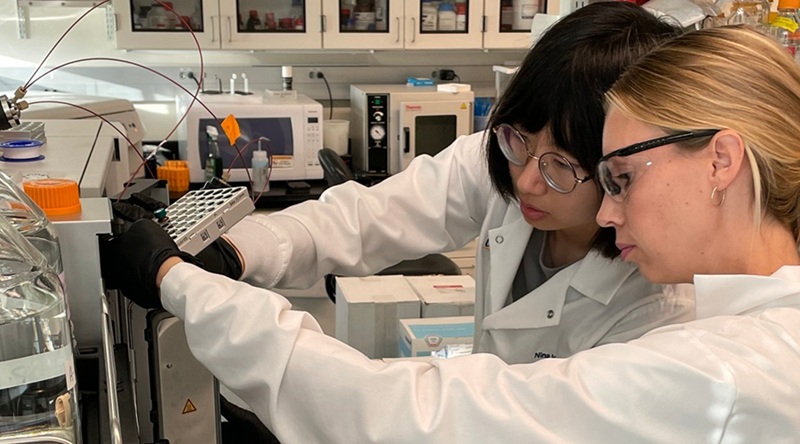
Online Tool Detects Drug Exposure Directly from Patient Samples
Doctors often rely on patient interviews and medical records to determine what medications a person has taken, but this information is frequently incomplete. People may forget drugs they used, take over-the-counter... Read more
Chemical Imaging Probe Could Track and Treat Prostate Cancer
Prostate cancer remains a leading cause of illness and death among men, with many patients eventually developing resistance to standard hormone-blocking therapies. These drugs often lose effectiveness... Read moreMolecular Diagnostics
view channel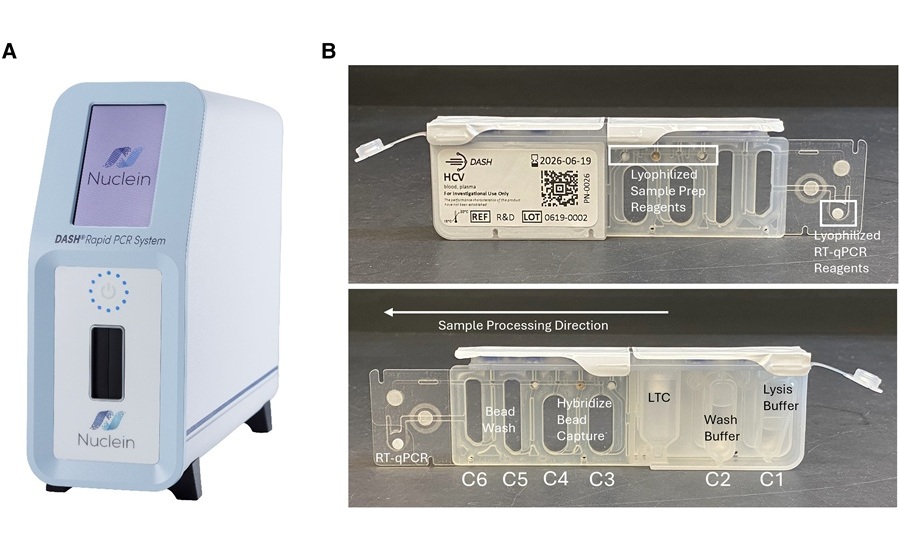
New 15-Minute Hepatitis C Test Paves Way for Same-Day Treatment
Chronic hepatitis C infection affects an estimated 50 million people worldwide and causes around 242,000 deaths each year, largely due to cirrhosis and liver cancer. Although the infection is curable with... Read more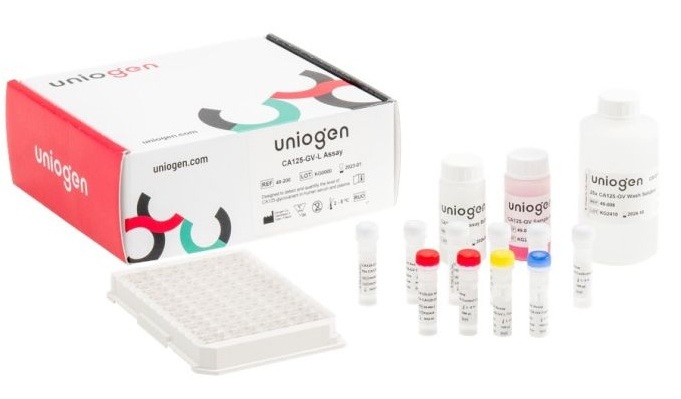
Ovarian Cancer Assay Outperforms Traditional Tests in Early Disease Detection
Globally, ovarian cancer is one of the deadliest cancers affecting women. Traditionally, early diagnosis of ovarian cancer has been challenging. Many ovarian cancers are diagnosed only after they have... Read moreHematology
view channel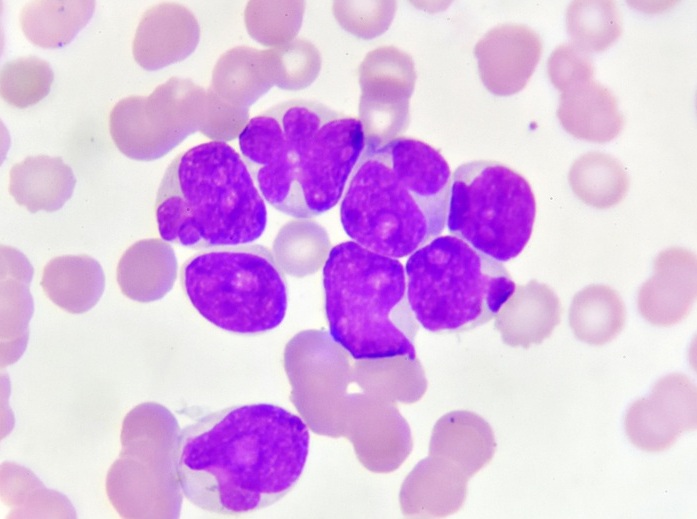
MRD Tests Could Predict Survival in Leukemia Patients
Acute myeloid leukemia is an aggressive blood cancer that disrupts normal blood cell production and often relapses even after intensive treatment. Clinicians currently lack early, reliable markers to predict... Read more
Platelet Activity Blood Test in Middle Age Could Identify Early Alzheimer’s Risk
Early detection of Alzheimer’s disease remains one of the biggest unmet needs in neurology, particularly because the biological changes underlying the disorder begin decades before memory symptoms appear.... Read more
Microvesicles Measurement Could Detect Vascular Injury in Sickle Cell Disease Patients
Assessing disease severity in sickle cell disease (SCD) remains challenging, especially when trying to predict hemolysis, vascular injury, and risk of complications such as vaso-occlusive crises.... Read more
ADLM’s New Coagulation Testing Guidance to Improve Care for Patients on Blood Thinners
Direct oral anticoagulants (DOACs) are one of the most common types of blood thinners. Patients take them to prevent a host of complications that could arise from blood clotting, including stroke, deep... Read moreImmunology
view channel
Routine Blood Test Can Predict Who Benefits Most from CAR T-Cell Therapy
CAR T-cell therapy has transformed treatment for patients with relapsed or treatment-resistant non-Hodgkin lymphoma, but many patients eventually relapse despite an initial response. Clinicians currently... Read more
New Test Distinguishes Vaccine-Induced False Positives from Active HIV Infection
Since HIV was identified in 1983, more than 91 million people have contracted the virus, and over 44 million have died from related causes. Today, nearly 40 million individuals worldwide live with HIV-1,... Read more
Gene Signature Test Predicts Response to Key Breast Cancer Treatment
DK4/6 inhibitors paired with hormone therapy have become a cornerstone treatment for advanced HR+/HER2– breast cancer, slowing tumor growth by blocking key proteins that drive cell division.... Read more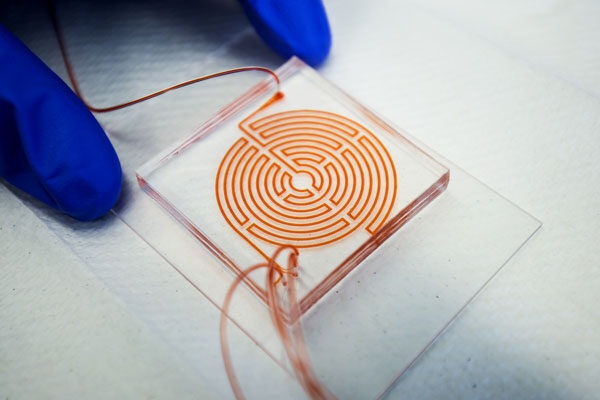
Chip Captures Cancer Cells from Blood to Help Select Right Breast Cancer Treatment
Ductal carcinoma in situ (DCIS) accounts for about a quarter of all breast cancer cases and generally carries a good prognosis. This non-invasive form of the disease may or may not become life-threatening.... Read moreMicrobiology
view channel
Blood-Based Diagnostic Method Could Identify Pediatric LRTIs
Lower-respiratory tract infections (LRTIs) are a leading cause of illness and death worldwide, and pneumonia is the leading infectious cause of death in children under five, claiming the lives of over... Read more
Rapid Diagnostic Test Matches Gold Standard for Sepsis Detection
Sepsis kills 11 million people worldwide every year and generates massive healthcare costs. In the USA and Europe alone, sepsis accounts for USD 100 billion in annual hospitalization expenses.... Read moreRapid POC Tuberculosis Test Provides Results Within 15 Minutes
Tuberculosis remains one of the world’s deadliest infectious diseases, and reducing new cases depends on identifying individuals with latent infection before it progresses. Current diagnostic tools often... Read more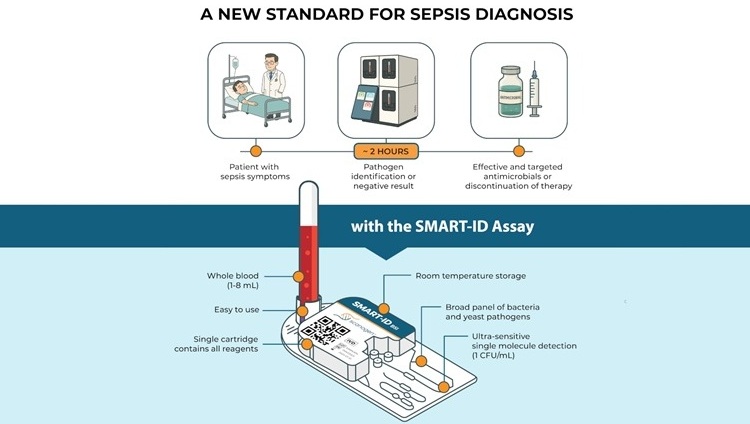
Rapid Assay Identifies Bloodstream Infection Pathogens Directly from Patient Samples
Bloodstream infections in sepsis progress quickly and demand rapid, precise diagnosis. Current blood-culture methods often take one to five days to identify the pathogen, leaving clinicians to treat blindly... Read morePathology
view channel
Rapid Low-Cost Tests Can Prevent Child Deaths from Contaminated Medicinal Syrups
Medicinal syrups contaminated with toxic chemicals have caused the deaths of hundreds of children worldwide, exposing a critical gap in how these products are tested before reaching patients.... Read more
Tumor Signals in Saliva and Blood Enable Non-Invasive Monitoring of Head and Neck Cancer
Head and neck cancers are among the most aggressive malignancies worldwide, with nearly 900,000 new cases diagnosed each year. Monitoring these cancers for recurrence or relapse typically relies on tissue... Read more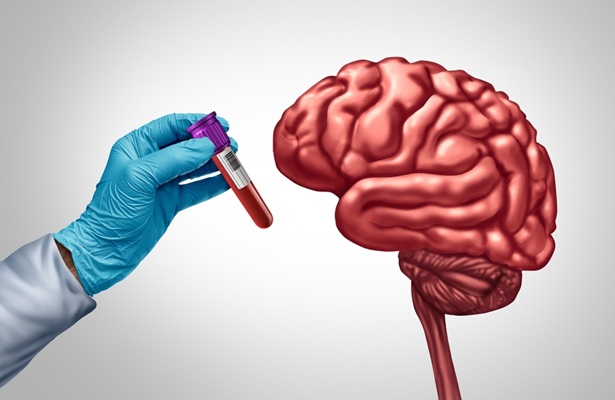
Common Health Issues Can Influence New Blood Tests for Alzheimer’s Disease
Blood-based tests for Alzheimer’s disease are transforming diagnosis by offering a simpler alternative to spinal taps and brain imaging. However, many people evaluated at memory clinics also live with... Read more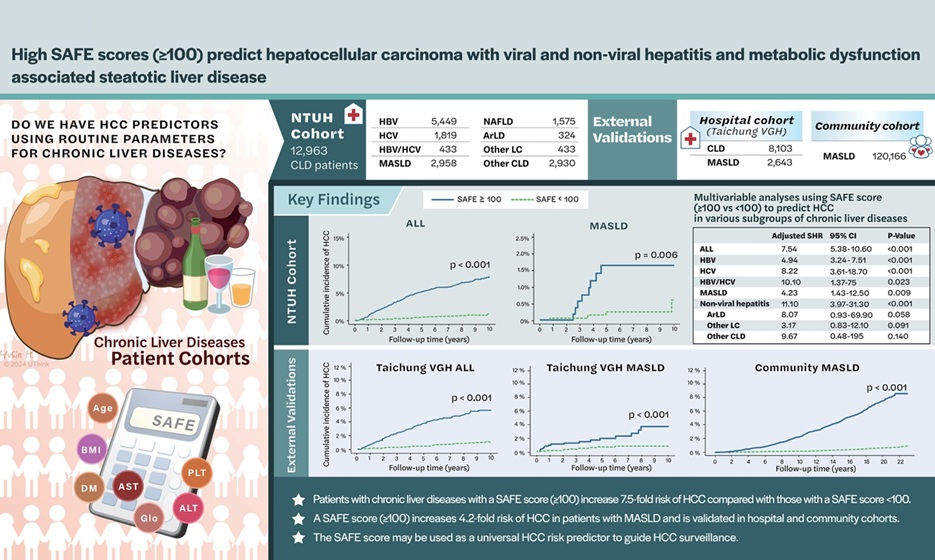
Blood Test Formula Identifies Chronic Liver Disease Patients with Higher Cancer Risk
Chronic liver disease affects millions worldwide and can progress silently to hepatocellular carcinoma (HCC), one of the deadliest cancers globally. While surveillance guidelines exist for patients with... Read moreIndustry
view channel
Abbott Acquires Cancer-Screening Company Exact Sciences
Abbott (Abbott Park, IL, USA) has entered into a definitive agreement to acquire Exact Sciences (Madison, WI, USA), enabling it to enter and lead in fast-growing cancer diagnostics segments.... Read more







 Analyzer.jpg)





